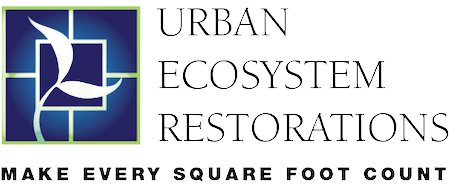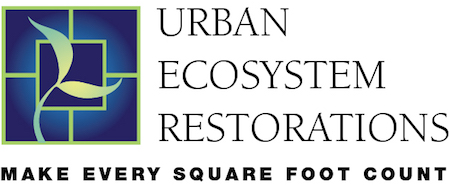Many people believe that the best place for urban nature and green infrastructure (including native plants, trees, and conservation landscaping) is in the public right of way (ROW). The ROW presents opportunities to include urban nature in ways that beautify, cool, and absorb stormwater in otherwise unbuildable areas. The plantings provide beauty, and adjacent landowners (particularly commercial developers and owners) can often satisfy environmental requirements in the ROW without sacrificing rentable square feet/building footprint area. The ROW areas that most often provide these opportunities are at traffic corners, in road medians or edges, along sidewalks, and under or above utility lines. It also intuitively makes sense to think of green infrastructure as belonging in the ROW, just as gray infrastructure does.
Policymakers often view this approach as a highly desirable way to incorporate green infrastructure into the built environment. UER also experimented with this strategy with one of its earliest pilot projects at a traffic corner in Montgomery County, Maryland (the Glen Echo Heights Corner, described below).
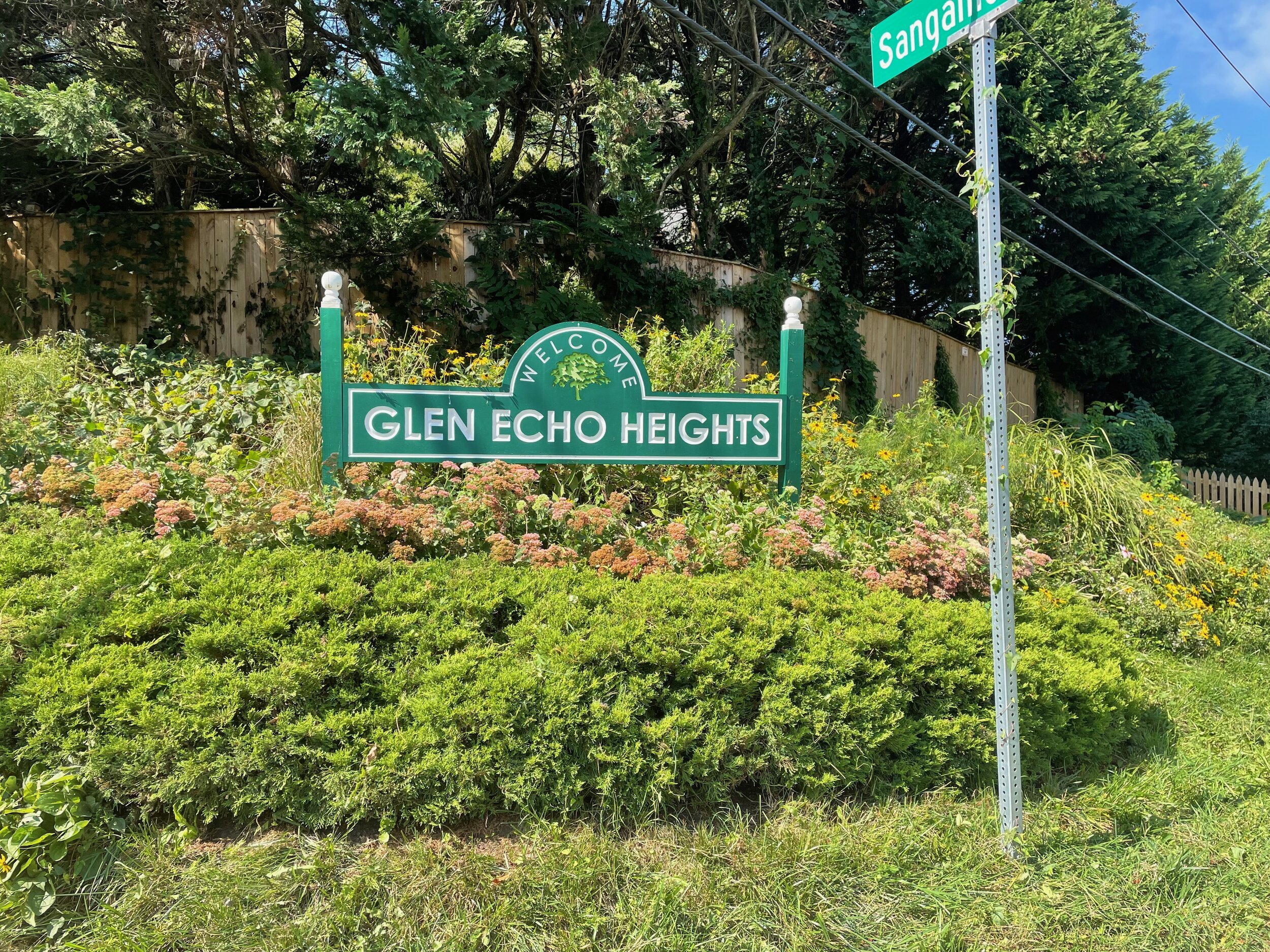
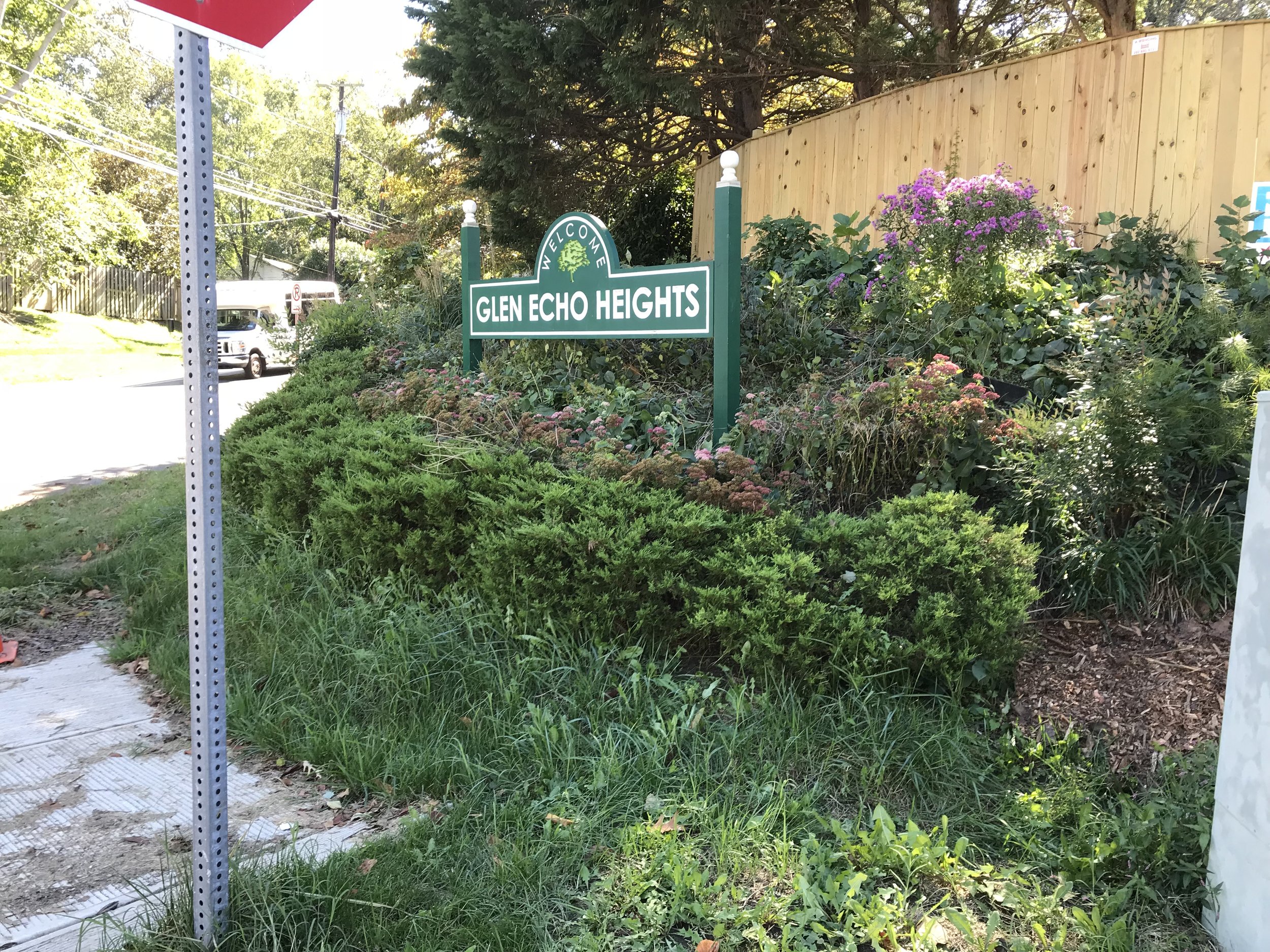

Unfortunately, these ROW areas are highly susceptible to failure and damage. We incorporate these nature-based solutions for their beauty and ecosystem benefits. And sometimes they succeed and grow for a number of years, but plantings in these spaces can suffer from:
- Vehicles driving into and over them
- Grey infrastructure and public utility maintenance — including, in some cases, removal of the entire installation
- Frequent mowing over when municipal contractors do not understand how to maintain nature-based practices
- Trampling by pedestrians and damage from passing vehicles
- Increased exposure to invasive plants due to high levels of disturbance and conditions that favor the success of invasive species
One of UER’s first pilot projects was at the Glen Echo Heights Corner, a traffic corner at the entrance to a residential neighborhood that featured its neighborhood sign. UER led an effort to remove invasive plants and vines infesting the corner area and replace them with a native plant community. This project at the Glen Echo Heights neighborhood started in 2018. UER has worked with the neighborhood during this time to support its maintenance and keep the invasive plants at bay.
I’m sad to report that over the last month (during June 2022), that corner has been mowed down and partially hollowed out for utility infrastructure. While it is unclear who has mowed down the native plantings repeatedly and broken the neighborhood sign, the area would have been at least partially destroyed with or without the mowing due to the traffic safety needs of that street corner. The repeated mowing over the native plants will likely kill the remaining survivors (it is unlikely that the mowing will kill any of the invasive vines).

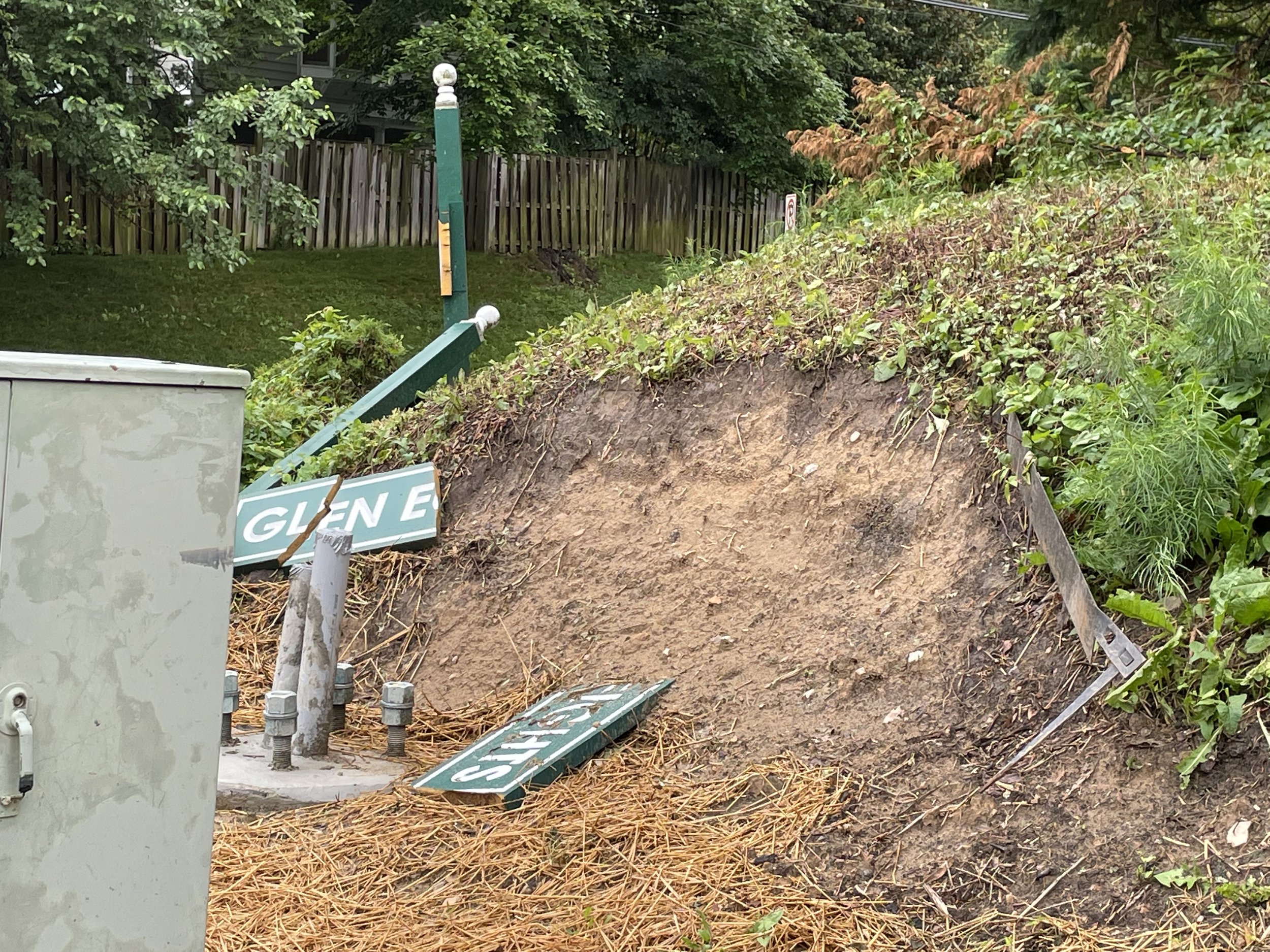

What’s most important here is that relying on public rights-of-way for our nature-based solutions is rife with dangers and increases the probability of failure, when compared to implementing our nature-based solutions on private property that are maintained to the same standards of high-quality commercial and residential buildings.
